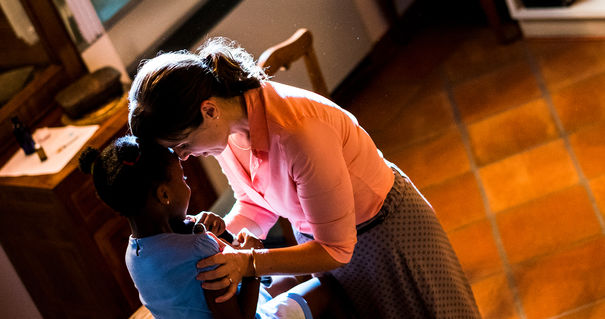Once upon a time halfway around the world: A review of Rwanda
by Kayode Faniyi

Like all sprawling traumas of its kind, the Rwandan genocide has spawned a significant amount of literature, the most visible being Hotel Rwanda and its now demystified apotheosis of “an ordinary man”, Mr. Paul Rusesabagina, the hotel manager of Hotel des Mille Collines.
Rwanda eventually gets round to crowning its own heroes but heroism is not the film’s primary concern. In contrast to the elite Rusesabagina, the protagonists that the real-life story Rwanda mines are ordinary citizens caught up in a deadly haze.
Augustin is an ordinary Hutu husband with a Tutsi wife and a daughter whose ethnicity thus refuses easy categorisation. Cecile is an ordinary Tutsi wife who escapes with her child after her Tutsi husband is hacked to death at a checkpoint. Cecile’s predicament, then, is relatively straightforward. But what is Augustin to do, caught as he is between the Hutu imperative polluting the Rwandan airwaves—enforced on the ground by his cousin Emile—and his filial duty to his wife. These individual predicaments overlap and set in motion the film’s final confrontation when Jolande, Augustin’s wife, herself endangered, stows a deadly secret in the rafters.
Rwanda began its artistic life as un spettacolo di teatro civile before Italian audiences. Its staging by the duo of Mara Moschini and Marco Cortesi was the vehicle through which it would become a film—they have plans to do the same for Il Muro, another piece examining the fall of the Berlin Wall. Rwanda, interspersed with faithful dramatisations of Mara and Moro’s impassioned narration, keeps faith with its provenance by embracing the sparse details of a theatrical set. It sidesteps, for the most part, the grisly realism with which such films can often be obsessed, proceeding instead by suggestion. As per the film, the same drama of social inertia that suffuses the relationship between Augustin and Jolande is replicated between Mara and Moro. Pushed by the women into overcoming their individual inertias, both men are moved towards bravery and courage.
For its creators, the story of the Rwandan genocide, it seems, is worthy of telling because Rwanda is inscrutable to its European audiences, for many of whom it is an inauspicious country that they cannot identify of a map. Mara and Moro materialize the genocide before their European audiences through a bodily investment in the story. Europe may have averted its eyes from Rwanda, but with their physical embodiment of the film’s lead characters, the duo invites its presumably white primary audience into a space of empathy. All well and good, but the chances are that the purifying waves of catharsis will quickly purge this audience of any lingering feelings of guilt or responsibility, if any.
Tune in now to the European moment and find that Rwanda is a clever allegory. Praxis has yet to match theory, but that Rwandan moment in Europe is recognizable. The United Kingdom is in the throes of an identity crisis brought on partly by an economic bludgeoning but also a rising intolerance of the other. The redoubtable Angela Merkel was brought to her knees by a crisis of intolerance that continues to wrack Germany. The Italian marionette jerks to the frenzied puppeteering of Matteo Salvini, Italy’s prime minister for intolerance. At the threat of a hefty fine, compassionate Italians must now stand idly by as desperate migrants perish at sea. No one is calling other people cockroaches yet, but Europe has always been subtle with its metaphors of violence.
Of course, these allusions are too elusive to make the sort of real-world impact that its creators hope their art will make. If Mara, Moro and director Salvetti recognise the European moment in Rwanda, they do not let on at all. Which is just as well. An allegory derived from a historical moment in a country from halfway around the world is likely to be the seed that falls on rocky ground. Closer to home, desperate dramas worthy of the civic theatre abound.

